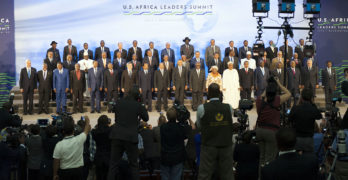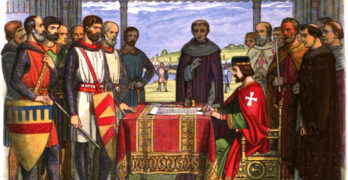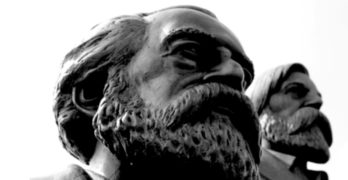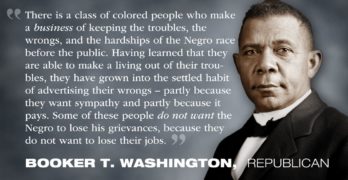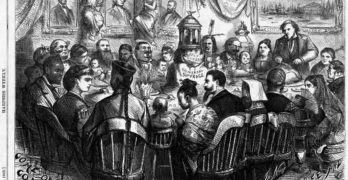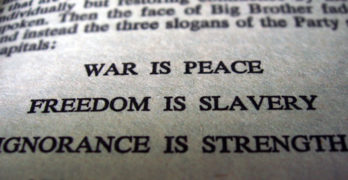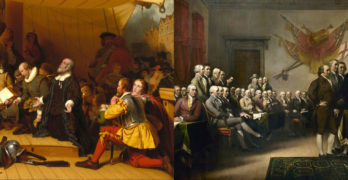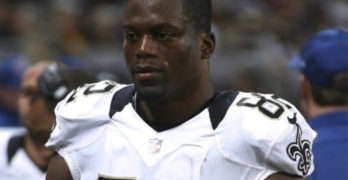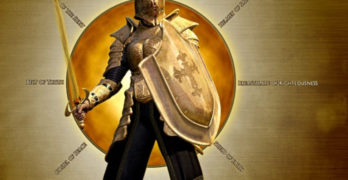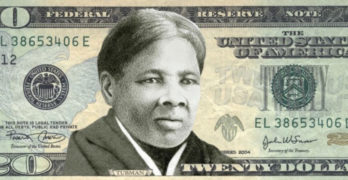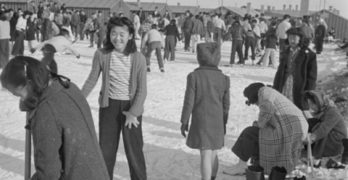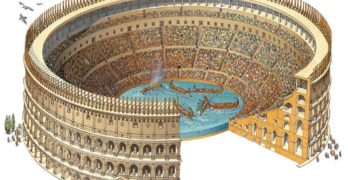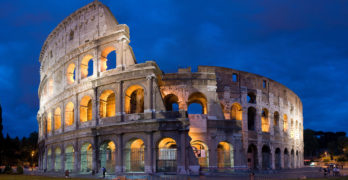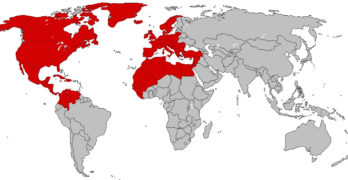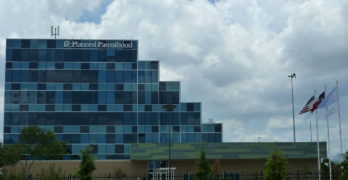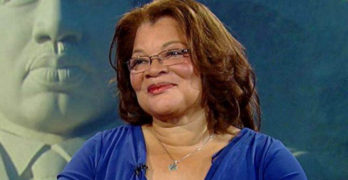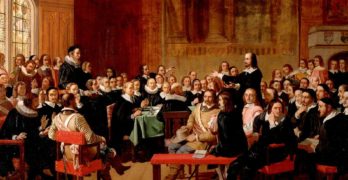 Many historians agree that the East African Revival had the farthest-reaching and longest-lasting impact of all the renewal movements in Africa. It began within the Anglican Church of Uganda through a remarkable partnership between Joe Church and several Ugandan evangelists and quickly spread to other churches in Kenya and Tanzania in the 1940s and 1950s.
Many historians agree that the East African Revival had the farthest-reaching and longest-lasting impact of all the renewal movements in Africa. It began within the Anglican Church of Uganda through a remarkable partnership between Joe Church and several Ugandan evangelists and quickly spread to other churches in Kenya and Tanzania in the 1940s and 1950s.
James Katarikawe (a Ugandan who studied Theology, Anthropology, and History at Oak Hill Theological College, London) in a thesis on the Rise and Progress of the East African Revival Movement wrote:
As the Holy Spirit began to work in many people’s hearts, there was deep conviction of sin. Many spent sleepless nights as they began to realize for the first time their spiritual destitution; many hidden sins were repented of, and hypocrisies revealed. Nothing could escape the searching light of the Holy Spirit.
He mentioned one big lesson that came out of the revival:
We have come to learn from all this that where Jesus is, there is no room for tribalism, or denominationalism: all colours of people look beautiful and racialism has no room either. They are all one in Christ Jesus.
John Vernon Taylor offered a useful insight on the Evangelical characteristics of the revival theology in Uganda:
Anglican Evangelical Theology—the sinful condition of man, the Atonement and the Saviorhood of Christ, the conversion of the individual and the offer of sanctification through the Holy Spirit conditioned by the surrender of the believer’s will.
The Threefold Challenge
Yona Mondo emerged as another founding father of the revival movement. Mondo preached and explained how the power of God’s Spirit is released by repentance,walking in the light, and brokenness. When there is repentance, pride gives way and its place is conviction and confession, and then forgiveness. Remember what the apostle James tells us, he said,
Confess to one another therefore your faults (your slips, your false steps, your offenses, your sins) and pray also for one another, that you may be healed and restored (to a spiritual tone of mind and heart). The earnest (heartfelt, continued) prayer of a righteous man makes tremendous power available dynamic in its working (James 5:16 AMP).
It is not the man who knows the correct explanation of this verse who knows its truth. It is the man who confesses his sin to his neighbor. Mondo had a threefold challenge:
- Are you walking in repentance?
- Are you walking in the light?
- And are you being broken?
Walking in the light means a total sharing with my fellow-Christians my secret sins. He reminded his fellow Christian brothers of Christ’s words to His disciples: “No longer do I call you servants, for the servant, does not know his master is doing; but I have called you friends, for all that I have heard from My Father I have made known to you.” Mondo said:
When we share our secrets there is a total identification with our brother. We have a reciprocal bond. There is no room for gossip or slander. Nothing needs to be talked over in secret which is already in the light. Gossip is converted into efforts to seek solutions together. Instead of majoring on a brother’s weakness we can defend him where is weak and promote him where he is strong.
We must be broken even as Jesus was broken for the world. To be broken even as Jesus was broken from the world. To be broken is to have no pride, for where there is pride there is no confession and no forgiveness. The broken one is he/she who is willing to “give in”, who doesn’t find his identity in always being in the right.
They Practiced True Koinonia
For instance, during the early days of the revival, one missionary noticed “evident love and fellowship with each other, quite regardless of class, station or race,” which provided a deeper and fuller conception of “fellowship”—the very essence of koinonia.
The revivalists called one another Ab’oluganda (“Brethren”), which fostered egalitarianism among themselves— an equal partnership between Europeans and Africans, between men and women, and between various tribes.
One day another member of the Revival Fellowship illustrated this concept of brokenness from his Bible: “And taking five loaves of bread and two fish He looked to heaven, and blessed, and broke and gave the loaves to His disciples, and the disciples gave them to the crowds.”
Until the Lord breaks your will, He will never use you. You will remain only a nice loaf of bread. He explained to his listeners that unless you were broken, you would be too proud to give your life away for people who were not perfect. You would wait for the perfect person and the perfect community, and you would never find them.
You would end up like Judas, making only a partial commitment to the group of believers to whom you belonged and finding you identity in your rebellion from them. He challenged his brothers and sisters in Christ who were far from perfect, to follow the example of Jesus who allowed His body to be broken.
Our commitment to one another in community can be no less than this, he said. “We must say to one another, this is my body broken for you. I am laying all my professional skills, abilities, gifts, talents and economic resources at your disposal. Take them and you use them as you see fit.
Without a willingness to live a transparent, broken life before other fellow believers the meetings were just another form of alienation. They were religious counterfeits. Another elderly evangelist from the Revival Fellowship said:
Christ is the centre of our needs, but He is first the centre of our lives. Before we pray concerning our desires, we must understand God’s desires and let them shape our own. Otherwise when we pray we are only reinforcing our self-centeredness.
This message was hard to bear as believers began to grasp its real meaning. Together they determined to make Christ the beginning and end of all their expectations. They determined to have no hope except that which was derived from the Bible. They learned that prayer was not a platform for self-expression but a self-emptying process.
Marriage, the Family, and Education
Monogamy was an important principle. The openness and integrity and honesty which characterize relations, between the brethren applied even more strongly within the marriage relationship” so that there is a real sharing, and mutual love and respect. The fellowship also gave women a role in their own right. They preached and prayed on an equal basis with men. Unless they were widows they would often be on the basis of their husband’s roles as leaders.
In the early days of the revival, young people were sometimes expelled from their homes when they were converted; they moved in with senior brethren, who acted as parents. But even where this did not happen the fellowship claimed a right to be involved in choosing a marriage partner. Young people were expected to marry from within the fellowship, and these Born Again parents were expected to dispense with the traditional bride price (though this did not always prove practicable).
Deeply critical of African values and lifestyles when they saw them as unfavorable to the Gospel, they adopted very often a “Christ against Culture.”In many ways, believers saw themselves as a new clan operating along the same lines as traditional clans, but also cutting across traditional clan obligations. They made a point of eating their clan totem or refused to give their children clan names which were associated with small gods. In Buganda, they refused to participate in twin rituals and, the last funeral rites.
But these traditional clan obligations were never superseded entirely. Just as these Born Again believers were critical of the Anglican Church while remaining part of it, so they had been critical of the tenets of their culture or society without withdrawing from it. They tried to reach a consensus with society and its basic obligations without compromising the gospel.
These revivalists also put a high priority on education for their children. The insistence on monogamy helped to reduce the children requiring education to manageable proportions; the high value put on saving helped to provide school fees; the home discipline helped children to be “high achievers” and to perform well in their studies. The virtues of honesty, integrity and hard work helped these believers to get jobs and having got them to keep them. Their educated children were in a good position to get high-salaried professional posts.
The Protestant Work Ethic & “Modernisation”
These revivalists were often seen as “modernizers” who inculcated the Protestant Work ethic with its emphasis on hard-work, honesty, sobriety and capital accumulation; and therefore with a tendency towards individualism and the breakdown of communal obligations which had brought ease and idleness.
The early leaders of this Revival certainly did represent a modernizing elite which was already established, at least in Buganda. However, on the other hand, they were as forthright in condemning unacceptable elements the destructive inroads of secularism and materialism as they were in condemning unacceptable elements in traditional life.
These revivalists gave up cultivation of “immoral” crops and refused to brew beer, often the source of what little cash was available in a peasant household. Insurance policies were condemned and believers were discouraged from adopting ostentatious life-styles or accumulating material possessions. It has been said that the Revival was a protest against the increasing individualism and functionalism of life, a re-assertion of traditional face-to-face values and human relationships.
Nevertheless, undoubtedly the revivalists were agents of modernization as well. They often rejected traditional medicines because of the unacceptable religious rituals often associated with them. This led to a greater reliance on western medicine.
Conclusion
An element that stamped the East African Revival as a genuine New Testament experience was its ethical aspect. In every great move of the Spirit, there has been understanding of the nature of sin. Mistakes and excesses there may have been, but ethical standards had leaped upwards and restitution was freely made. Willing admissions, too, had been made for wrongs that were committed.
For over a century the East African Revival Fellowship has had a deep impact on many Churches in East Africa, invigorating and renewing their life and offering to individuals the challenge of a deeper experience of salvation in Christ and a more radical commitment to Christian discipleship.
Joe Church also played a crucial role in presenting to many other parts of the world the East African Revival as an authentic renewal movement of the Holy Spirit. Church arranged for William Nagenda, Yosiya Kinuka, and Festo Kivengere, (the revival reached him in 1941), to visit England with him to tell about what God had been doing in the East African Revival Fellowship.
They testified about the Holy Spirit’s work and spread the renewal movement to Switzerland, France, and Germany in 1949; Malawi in 1951; Angola, and India in 1952; the United States and Israel in 1953; and Brazil in 1959.
From its low-key beginnings in Uganda and Rwanda in the mid-1930s, the revival became an international movement whose impact was carried beyond Africa as far as Europe, North America, and South Asia. Festo Kivengere became the best known African evangelist of that time and joined the Billy Graham evangelistic team for several campaigns.
In many respects, the East African Revival falls within the pattern of Evangelical Awakenings which have been a feature of European and American Protestantism since the 18th Century.
Nevertheless, when the Lord revived the church in Uganda, they became an upwardly-mobile status group, participating in the creation of a petit-bourgeoisie in society at large. This and other factors created tensions within themselves; most notably in the events which led to quarrels and divisions between different groups. This was the beginning of the end of the Revival, but that will be an issue for a different day.
Further Reading:
- Kevin Ward, “Tukutendereza Yesu: The Balokole Revival in Uganda,” in From Mission to Church: A Handbook of Christianity in East Africa, edited by Zablon Nthamburi
- Kevin Ward, The East African Revival: History and Legacies, Publisher: Routledge; 1 edition 2012).
- Kevin Ward, “Africa,” in A World History of Christianity, edited by Adrian Hastings (Grand Rapids: W. B. Eerdmans, 1999).
- John E. Church, Quest for the Highest: An Autobiographical Account of the East African Revival (Exeter, UK: Paternoster Press, 1981).
- Kefa Sempangi, Reign of Terror, Reign of Love (Lion Publishing 1979).
- John Vernon Taylor, The Growth of the Church in Buganda: An Attempt at Understanding (Publisher: Forgotten Books 2017).
- Neville Langford-Smith, “Revival in East Africa,” International Review of Missions (1954).
- James Katarikawe, The East African Revival, (Publisher: Create Space Independent Publishing Platform; 1st edition 2015).
- H.H. Osborn Pioneers in the East African Revival (Publisher: Apologia Publications 2000).
- Breath of Life: History of the Rwanda Mission (Publisher: Imprint unknown; First Edition 1971).
- Bill Butler, Hill Ablaze, (Hodder & Stoughton, London, 1976).
- Adrian Hastings, The Church in Africa: 1450-1950 (Oxford: Clarendon Press, 1994).
- Elizabeth Isichei, A History of Christianity in Africa (Grand Rapids: W. B. Eerdmans, 1995).
- James E. Orr, Evangelical Awakening in Africa (Minneapolis: Bethany Fellowship, 1975).
- Jocelyn Murray, A Bibliography of the East African Revival Movement, in Journal of Religion in Africa, 1976.






